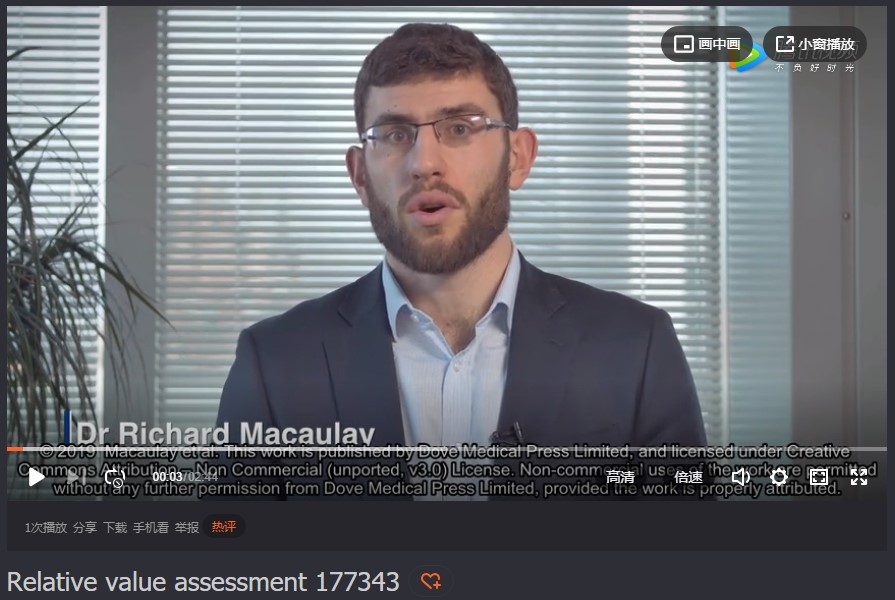9 0 6 7 6
论文已发表
注册即可获取德孚的最新动态
IF 收录期刊
- 2.6 Breast Cancer (Dove Med Press)
- 3.9 Clin Epidemiol
- 3.3 Cancer Manag Res
- 3.9 Infect Drug Resist
- 3.6 Clin Interv Aging
- 4.8 Drug Des Dev Ther
- 2.8 Int J Chronic Obstr
- 8.0 Int J Nanomed
- 2.3 Int J Women's Health
- 3.2 Neuropsych Dis Treat
- 4.0 OncoTargets Ther
- 2.2 Patient Prefer Adher
- 2.8 Ther Clin Risk Manag
- 2.7 J Pain Res
- 3.3 Diabet Metab Synd Ob
- 4.3 Psychol Res Behav Ma
- 3.4 Nat Sci Sleep
- 1.9 Pharmgenomics Pers Med
- 3.5 Risk Manag Healthc Policy
- 4.5 J Inflamm Res
- 2.3 Int J Gen Med
- 4.1 J Hepatocell Carcinoma
- 3.2 J Asthma Allergy
- 2.3 Clin Cosmet Investig Dermatol
- 3.3 J Multidiscip Healthc

Relative value assessment: characterizing the benefit of oncology therapies through diverse survival metrics from a US perspective
Authors Macaulay R, Ahuja A, Ademisoye E, Juarez-Garcia A, Shaw JW
Received 23 June 2018
Accepted for publication 29 October 2018
Published 19 March 2019 Volume 2019:11 Pages 199—219
DOI https://doi.org/10.2147/CEOR.S177343
Checked for plagiarism Yes
Review by Single-blind
Peer reviewers approved by Dr Justinn Cochran
Peer reviewer comments 3
Editor who approved publication: Professor Samer Hamidi
Objectives: The introduction of innovative, high-cost
oncology treatments, coupled with mounting budgetary pressures, necessitates
value trade-offs across cancer types. Defining value is critical to informing
decision-making. A cost-value analysis tool was used to assess relative
clinical value from a US perspective using multiple outcome metrics for a
variety of metastatic cancers.
Methods: Literature
published (January 1, 2000–August 31, 2016) was reviewed to identify outcome
metrics for approved treatments for metastatic cancers. Data were extracted or
derived for median and mean overall survival (OS), landmark survival rates, and
other survival metrics, and compared across treatments vs their respective
trial comparators, with and without considering costs.
Results: Reported
survival metrics varied by agent within cancer type. For treatment of prostate
cancer, abiraterone yielded the highest improvement in 1-year survival rate
(13.7%, previously treated), whereas enzalutamide yielded the highest median OS
improvement (4.8 months, previously treated) and sipuleucel-T, the highest mean
OS improvement (3.6 months, previously untreated) vs their respective trial
comparators. For treatment of non-small cell lung cancer vs their respective
trial comparators, nivolumab yielded the highest improvement in mean OS
(11.9 months) and 3-year survival rate (12.6%), each in previously treated
squamous disease, whereas afatinib yielded the highest median OS improvement
(4.1 months, previously untreated EGFR del19 and L858R mutants).
Cost-value analysis results varied with the applied survival metric.
Conclusions: Although
median OS is the traditional gold standard oncology efficacy metric, it fails
to capture long-term survival benefits—the ultimate goal of cancer
treatment—offered by new treatment modalities. Diverse metrics are needed for
comprehensive value assessments of cancer therapies.
Keywords: value
framework, value assessment, immuno-oncology, cost-value analysis
摘要视频链接:Relative value
assessment
